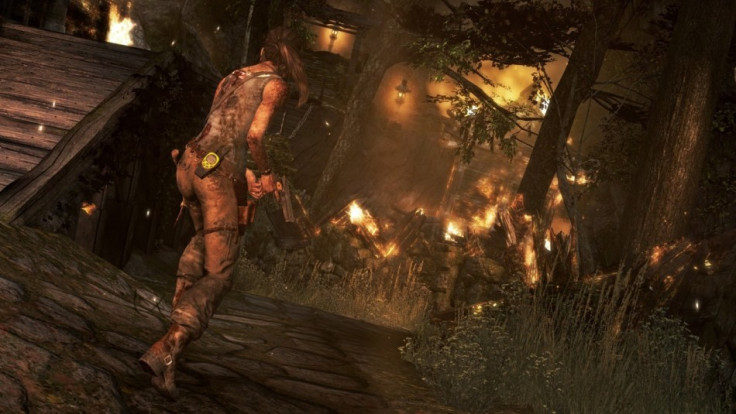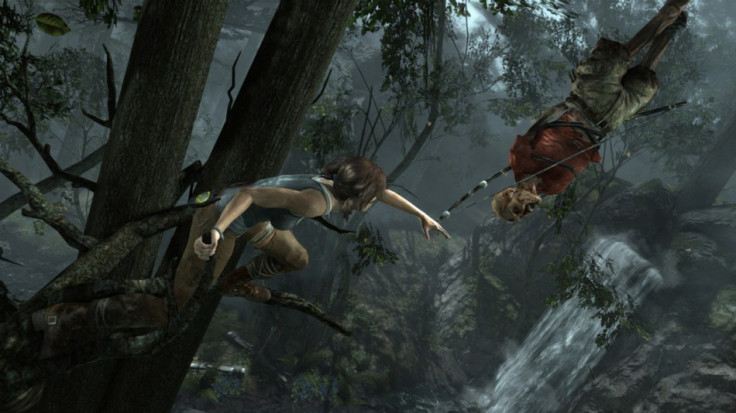Tomb Raider Director: "We Want the Player to Feel what Lara Feels"
The Tomb Raider reboot launches March 5. We spoke with gameplay director Daniel Bisson about the new Lara Croft.

When we first played Crystal Dynamics' Tomb Raider reboot at Eurogamer 2012, we were impressed with the game's new version of Lara Croft. Strong, capable - but also vulnerable and human - this younger Lara was very unlike the 1D pin-up we'd gotten used to. With the game due out on 5 March, we sat down with gameplay director Daniel Bisson to discuss how what you do in Tomb Raider, reflects the woman you're playing.
IBTimes: Lara's first kill is very traumatic for her. What did you do with the design of the combat to ensure that killing people felt significant, felt difficult?
Daniel Bisson: One word we were talking about which was very important was 'synchronisation', synchronisation between Lara and the player. We want the player to feel what Lara feels. So, we tried to make that every time she does something, some new thing, it had a toll, almost like a stain.
The first time she risks her own life is when she's crossing this log over a chasm. Normally in videogames you could do that easily and be like 'what's next?' But we wanted to celebrate that moment. We wanted that to be when she admits 'I'm going to risk my life to get to my friends.' The same thing happens with the first kill. She has to do something big to free herself from that threat.
But after that, if you look at the way we stage combat, the enemies get further away. It's purposefully like that so that the first time you kill, it's closer and more visceral and we have Lara crying.
But later on, when she tells her friend that she's had to kill a lot of people and he says 'that must have been difficult' she says it was surprisingly easy. She realises that she has something inside of her that she doesn't know she had. Everything we tell in the story is paralleled in the gameplay. It's synchronised.

IBT: How do the game's environments play into that?
DB: We wanted to tell the story of a normal person going through a change; a lot of people ask me 'why did you create a dark Lara?' and I answer that she's not a dark Lara, it's a dark environment. The island is a character by itself. It's the vehicle for transforming Lara from a naïve teenager into a full-fledged woman. It's like the mother for the Tomb Raider that will come.
We wanted to use the environment to depict how Lara was feeling. When she emerges from the cavern into the daylight at the game's beginning, it's like she's reborn, there's hope. And later on during the violence there's fire, because she's being burned, something in her is being destroyed.
IBT: How do Lara's relationships to her friends change throughout the game?
DB: Well, there's Roth who was a friend of Lara's father and when he died, Roth became a kind of father figure to Lara. That's why, originally she wants him to come and save her, but he can't because he's wounded, and he tells her she needs to help herself. So, he's still this father figure - he's helping Lara to grow.

This is why we want to dial down the sexiness, the depiction of Lara as a sex symbol. We wanted to focus more on the internal part of our character. Imagine the old Lara, with the sunglasses and the shorts and the tight top breaking down and starting crying - it doesn't work.
We wanted to make something more intimate. If we gave her a relationship with a guy outside of this father figure relationship we would be de-focusing. The game is about Lara growing herself and finding out who she is. There's a line where Roth says "you can do it, you're a Croft" and Lara says "I don't know if I'm that kind of Croft." She doesn't know who she is yet.
Jean-Paul Sartre said "you define yourself based on the perspective of the others" and to begin with in the game that's what she's doing. But at a certain point she becomes free of that and she finds herself by looking at herself.
IBT: To do all this, did you work closely with Rihanna Pratchett, the game's scriptwriter?
DB: I was more like a movie director, in that I took that script and thought about how we could represent it in the game itself. For example with the staging of the combat, I knew that that first kill sparked an evolution in the character so I wanted to convey things like that with gameplay elements.
For the intimate moments, like the first time you get the bow and arrow, instead of creating spectacle we created simple interactions. This is something I worked on a lot myself throughout my career. When an interaction is complex we become more fearful and determined to conquer, determined to dominate.
But when it's much more simple it can represent more complex emotions. For example, in a game like The Walking Dead from TellTale, in order to build those complex emotions, complex relationships the interaction has to be super simple. Same thing with Heavy Rain.
We have that in the game, in moments where we wanted to create intimacy or confusion the interaction is simple.

IBT: What was it that you wanted to keep in from the previous games?
DB: These three pillars of Tomb Raider gameplay: Puzzles, platforming and combat. Also, exploration - the fact that you can lose yourself in an environment. You don't need to have objectives to do; you can just be in awe.
To be honest, we had a conflict, me and Noah [Huges - creative director], because I hate when a player just walks - I'm more of an action guy. And he was saying that in Tomb Raider, we were going to be celebrating walking, and I was saying, well, that's boring. But in Tomb Raider, exploration is very important. Just seeing a waterfall and wanting to go behind it just for the fun of it. That's Tomb Raider - it doesn't always have to have a gameplay point.
That's why we have these hubs that you can look around. I've seen people spend five hours in these places: Even though there's no action or plot, they stay there and collect things. And that's something we wanted to keep from the old Tomb Raider, these environments that you can just enjoy looking around.
© Copyright IBTimes 2025. All rights reserved.






















